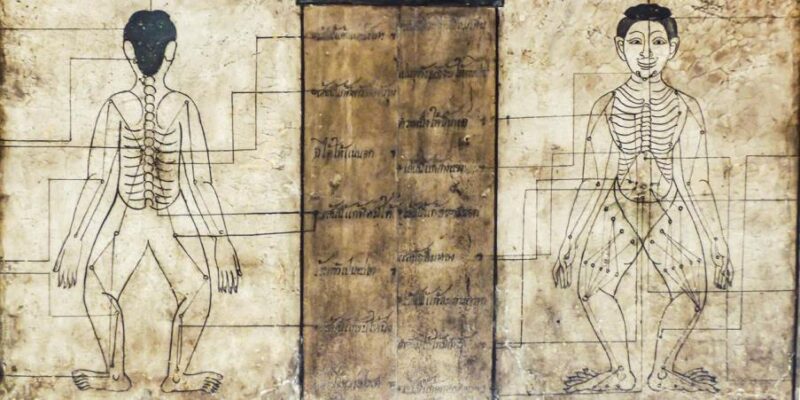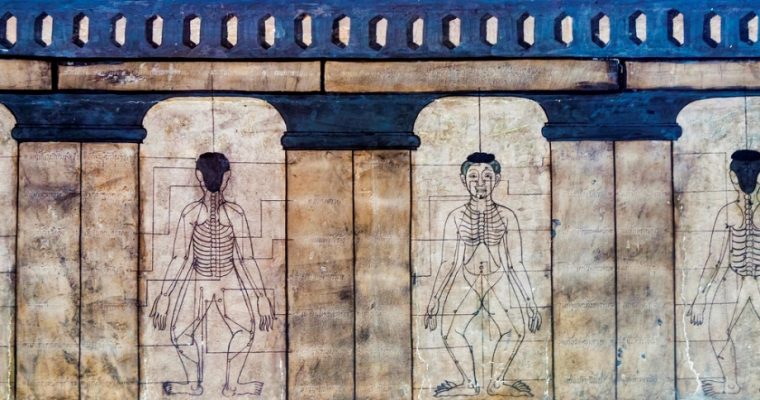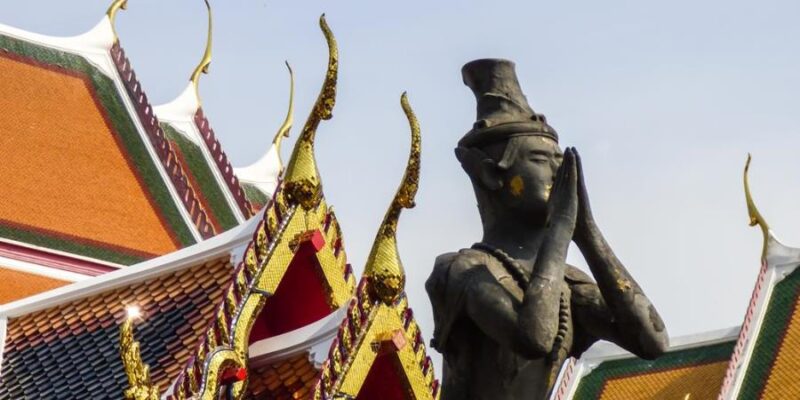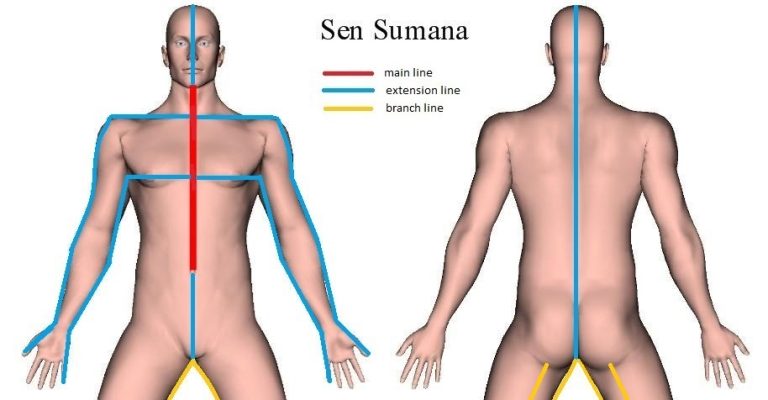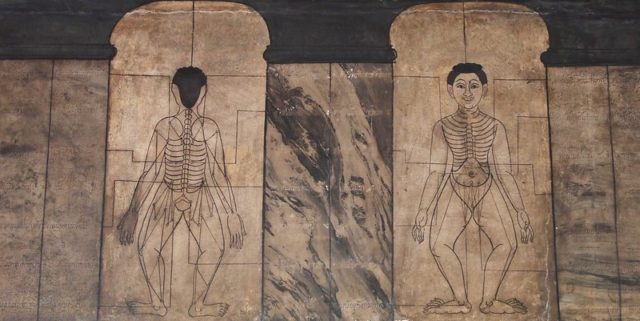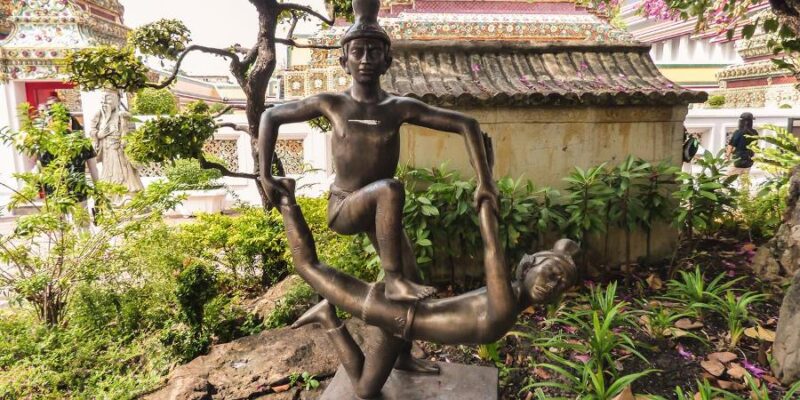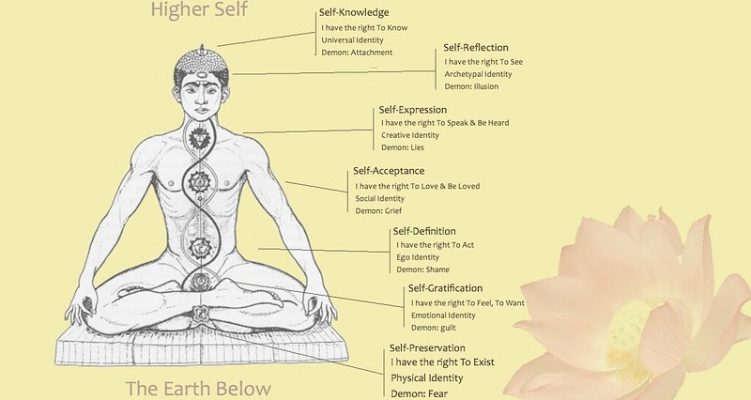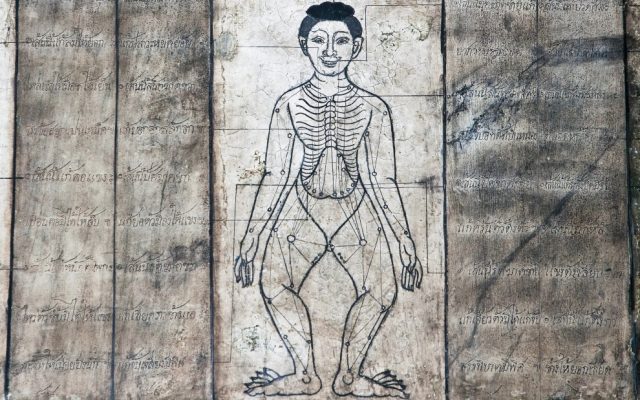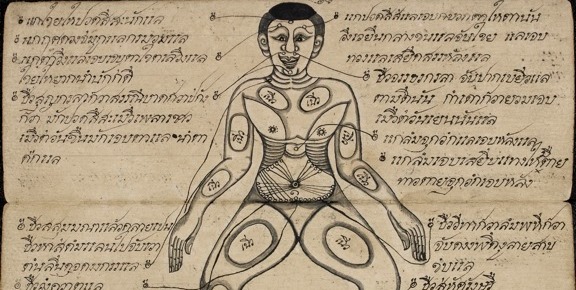
When you compare the Thai Sib Sen Energy Lines and the principal Indian Yoga Nadis you can only come to the conclusion that they have much in common.
Historically, this makes perfect sense because the whole of Southeast Asia was heavily influenced by India, in particular by Indian culture and knowledge. This Indian influence was intense and profound, and roughly spanned the period from 290 BCE to the 15th century CE, which is an astounding period of almost 2,000 years.

In this time, Hindu-Buddhist influences were incorporated into local political, cultural, philosophical, and religious systems, and in the martial arts, performance arts, architecture, and indigenous traditional medicine of the Southeast Asian peoples, to just name some domains.
More specifically, think of the impact of Buddhism (Buddhist Medicine), Ayurveda, Tantra, and Yoga on the local, indigenous healing arts in various Southeast Asian regions.
As for a comparison between the Thai Sen Lines and Indian Nadis — the subtle energy infrastructure of the body — you cannot else than acknowledge that the core concept of Sen Lines must have been derived from the Yoga Nadis.
Similarity between Sen Lines and Nadis
So, let’s first take a look at the similarities between the Sen and Nadis.
- The Sen and Nadis are a vast network of so-called Energy Channels that go through the entire body, carrying and distributing Prana Life Energy that reaches every single cell, and regulate every function, may that be physical, physiological, psychological, mental, or spiritual.
- Of both the Sen and Nadis it’s claimed that there are at least 72,000 Energy Channels in the body.
- Each of the principal Energy Channels starts in the abdominal region and ends at an opening, “gate,” orifice, or extremity of the body.
- The number of principal Energy Channels depends on the number of gates or openings in the body, and depending on how you count them, and which you find most prominent, you come to 10 or 14 major, principal Energy Channels.
- The first three most important Energy Channels are called Sushumna, Ida, and Pingala in Yoga, and Sumana, Ittha, and Pingkhala in Thai Massage. The linguistic resemblance is obvious, and moreover, the functions, trajectories, and locations in the body are more or less the same.
- Some other Sen and Nadis have comparable or almost similar names (but not always similar functions or locations), such as Gandhari Nadi and Sen Kalathari (the latter also carrying the synonyms Galadhari and Gandhari), or Sen Sikhini (part of Sen Nanthakrawat) and Shankhini Nadi.
- Both the Sen and Nadis are said to have an infinite number of acupressure point locations along the channels that can be manipulated to influence the flow of Prana Life Energy.
Difference between Sib Sen Lines and Yoga Nadis
Now, let’s take a look at the differences between the Sen and Nadis.

- Not all principal Energy Channels of the Sen and Nadis have the same or similar names;
- Not all principal Energy Channels of the Sen and Nadis are thought to end at the same gates or openings;
- The number of principal, most important Energy Channels may be different: 10 for the Sib Sen, but 10 or 14 for the Yoga Nadis;
- The principal ways to manipulate (or work with) the Sen are massage, acupressure, stretches, and poses, but with Nadis the principal ways are Pranayama Breathwork, Asanas (Yoga Poses), Mudras (gestures), and Bandhas (muscle locks);
- The Sen Lines know a well-described system of Sen Line Extensions and Branches, which completely lacks for the Yoga Nadis;
- Health issues and therapy are well-described in relation to specific major Sen Lines, but much less clear in relation to the 10 or 14 principal Nadis;
- The three principal Nadis (Sushumna, Ida, and Pingala) are considered of primary importance and are typically the Nadis predominantly focused on, while in the Sen Line system all ten major Sen are of importance to therapeutically work on.







